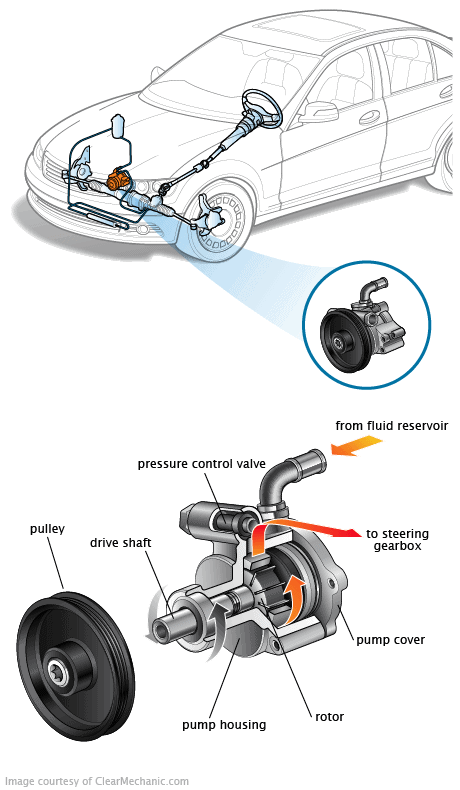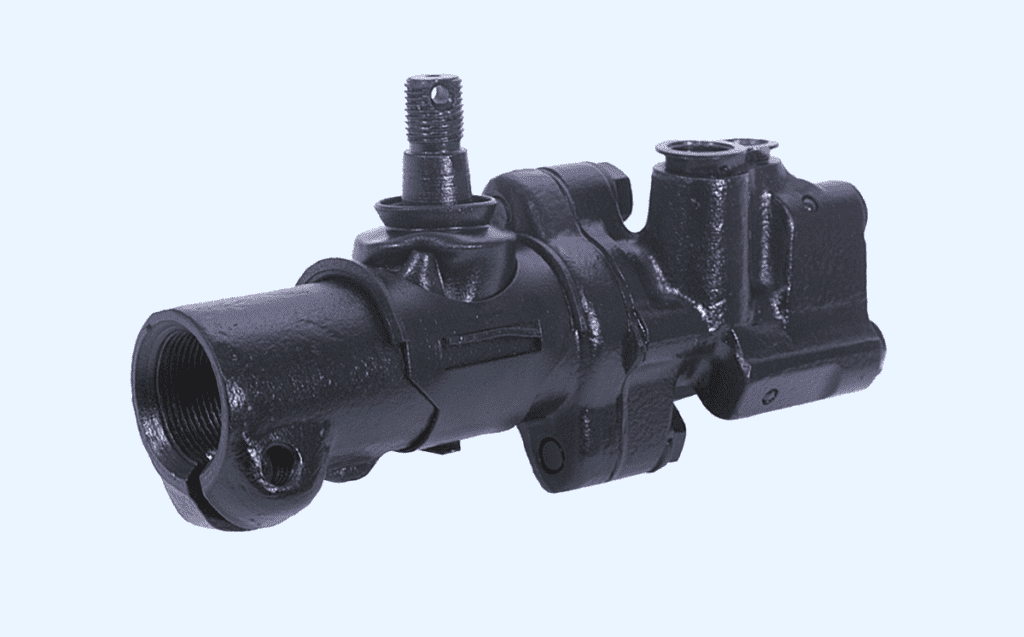The power steering control valve is a key component of your car’s power steering system, responsible for directing the flow of hydraulic fluid to the steering gear and helping to make steering more responsive and effortless. In this article, we’ll explore what a power steering control valve is, how much it costs to replace one in Canada, the symptoms of a faulty control valve, and what you can do to extend the life of your power steering system.
What is a Power Steering Control Valve?
The power steering control valve is a component of your car’s power steering system that helps to regulate the flow of hydraulic fluid to the steering gear. It works by using a series of valves and chambers to direct the flow of fluid, allowing the steering to become more responsive and effortless.

How Much Will it Cost to Replace a Power Steering Control Valve in Canada?
The cost of replacing a power steering control valve in Canada can vary depending on the make and model of your car, as well as the type of control valve you choose. On average, you can expect to pay between $500 and $1000 for parts and labor. This cost includes the cost of the replacement control valve, as well as the cost of labor for a professional mechanic to install it. The labor time for a power steering control valve replacement is typically around 2-3 hours, depending on the make and model of your car and the accessibility of the control valve.
What are the Symptoms of a Faulty Power Steering Control Valve?
If your power steering control valve is failing, you may notice one or more of the following symptoms:
• Stiff or unresponsive steering
• Groaning or squealing noises when turning the steering wheel
• Leaking power steering fluid
• Uneven tire wear
• Vibration or shaking in the steering wheel
If you experience any of these symptoms, it’s important to have your power steering system checked by a professional mechanic.
How Often Does a Power Steering Control Valve Need to be Replaced?
There’s no set interval for replacing a power steering control valve, as it can vary depending on driving conditions, mileage, and other factors. However, most mechanics recommend inspecting your power steering system for signs of wear and tear every 50,000 to 100,000 kilometers, and replacing components as needed.
How Does a Power Steering Control Valve Become Defective?
Power steering control valves can become defective for a variety of reasons, including exposure to heat and friction, driving on rough or uneven terrain, and exposure to road debris and contaminants. Over time, the internal components of the control valve can become worn or damaged, causing the flow of hydraulic fluid to become restricted and leading to reduced steering performance.
How Can a Faulty Power Steering Control Valve Affect Other Systems in the Car?
A faulty power steering control valve can have a ripple effect on other systems in your car. For example, if the control valve is leaking fluid, it can cause damage to other components of the power steering system, leading to reduced steering performance and potentially causing damage to the steering gear.
Is it Safe to Drive with a Faulty Power Steering Control Valve?
Driving with a faulty power steering control valve is not advisable, as it can significantly impact your vehicle’s steering performance and safety. The power steering control valve is responsible for regulating the flow of power steering fluid to assist with steering efforts. When this valve malfunctions, you may experience erratic steering behavior, such as stiffness, difficulty turning, or sudden changes in steering resistance. These issues can make it challenging to control your vehicle, particularly when navigating turns or reacting to unexpected road conditions, increasing the risk of accidents.

How Can I Make My Power Steering Control Valve Last Longer?
There are several steps you can take to extend the life of your power steering control valve, including:
• Using high-quality power steering fluid recommended by your car’s manufacturer
• Keeping your power steering system properly lubricated and maintained
• Inspecting your power steering system regularly for signs of wear and tear, such as leaks, worn hoses, and damaged seals
• Avoiding harsh driving conditions, such as driving on rough or uneven terrain
• Having your power steering system inspected by a professional mechanic every 50,000 to 100,000 kilometers
By following these simple steps, you can help extend the life of your power steering control valve and keep your steering system functioning properly.
Conclusion
A faulty power steering control valve can cause a number of issues with your car’s steering, making it difficult or even dangerous to drive. If you notice any symptoms of a failing control valve, it’s important to have it replaced as soon as possible by a professional mechanic. By taking proactive steps to maintain your power steering system, including inspecting it regularly for signs of wear and tear and using high-quality fluid, you can help extend the life of your power steering control valve and avoid costly repairs down the road. Remember, a little preventative maintenance can go a long way towards keeping your car safe and reliable.
Next Steps
Book Your Power Steering Control Valve Replacement
The service most frequently booked by those who read this article is Power Steering Control Valve Replacement. Uchanics’ expert technicians make the process even more convenient by bringing the service right to your doorstep. We perform this job at your home or office, catering to over 40 cities in Ontario. Our commitment to excellence has earned us more than 700 glowing 5-star reviews. Choose Uchanics for your power steering control valve replacement and experience unparalleled convenience and top-quality service.
